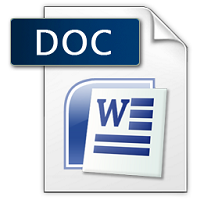₹198.00
Scroll down for Match your questions with Sample
Note- Students need to make Changes before uploading for Avoid similarity issue in turnitin.
Another Option
UNIQUE ASSIGNMENT
0-30% Similarity in turnitin
Price is 700 per assignment
Unique assignment buy via WhatsApp 8755555879
Description
| SESSION | SEPTEMBER 2023 |
| PROGRAM | BCA |
| SEMESTER | II |
| COURSE CODE & NAME | DCA1205 – Digital Logic |
SET-I
- Define a number system. Explain how to convert Decimalnumber to binarynumber with an example.
Ans 1.
A number system is a writing system for expressing numbers; it’s a mathematical notation for representing numbers of a given set, using digits or other symbols in a consistent manner. The most common number system used today is the decimal system, also known as the base-10 system, which uses ten different digits (
Its Half solved only
Buy Complete from our online store
https://smuassignment.in/online-store/
MUJ Fully solved assignment available for session SEPT 2023.
Lowest price guarantee with quality.
Charges INR 198 only per assignment. For more information you can get via mail or Whats app also
Mail id is aapkieducation@gmail.com
Our website www.smuassignment.in
After mail, we will reply you instant or maximum
1 hour.
Otherwise you can also contact on our
whatsapp no 8791490301
- Define logic gates and explain various logic gates in detail.
Ans 2.
Logic gates are fundamental building blocks of digital circuits. They are electronic devices that perform basic logical functions, which are essential in performing operations in digital electronics and computing. Each gate performs a specific logic function, with the most common being AND, OR, NOT, NAND, NOR, XOR, and XNOR. Below, we delve into each of these gates in
- Define K-map. Simplify f (a, b, c, d)=∑m(0, 2, 4, 6, 7, 8, 9, 11, 12, 14).
Ans 3.
A Karnaugh map, commonly abbreviated as a K-map, is a diagrammatic method used in digital logic and computer science for simplifying Boolean algebra expressions. Developed by Maurice Karnaugh in 1953, this tool helps simplify expressions by minimizing the number of terms and their complexity. It is especially useful in designing digital circuits like those in computers and other electronic device
SET-II
- Discuss aboutsequential circuits and brief the working of JK flip flopflop.
Ans 4.
Sequential circuits are a fundamental concept in digital electronics and computer engineering. These circuits use a sequence of inputs and the current state to determine their output. Unlike combinational circuits, which rely solely on present input values, sequential circuits incorporate storage elements, allowing them to “remember” past inputs and states. This memory characteristic is
- Explain various types of shift register.
Ans 5.
Shift registers are fundamental components in digital electronics, used for storage and movement of data. They come in several varieties, each suited to specific applications. Understanding these varieties is crucial for electronics and computer engineering.
Serial-in Serial-out (SISO)
The Serial-in Serial-
- Explain the working principle of Traffic Signal Systems.
Ans 6.
Traffic signal systems, a crucial component of urban traffic management, are designed to control traffic flow, minimize congestion, and enhance safety for both drivers and pedestrians. This comprehensive overview delves into the various aspects and workings of these systems.
Introduction to Traffic


